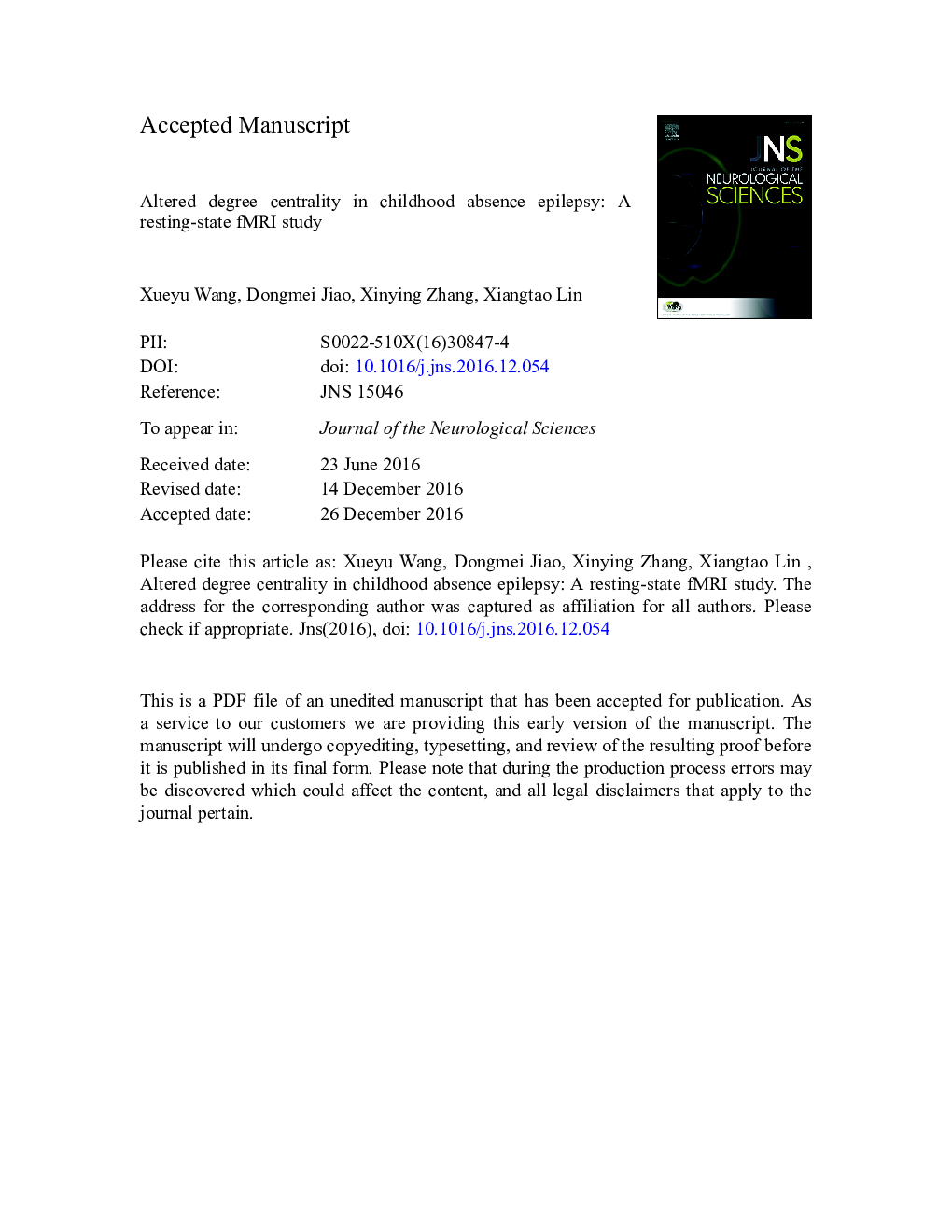| Article ID | Journal | Published Year | Pages | File Type |
|---|---|---|---|---|
| 5503048 | Journal of the Neurological Sciences | 2017 | 25 Pages |
Abstract
Modern network studies have suggested that the pathology of many neurological diseases is in fact not equally distributed over the brain but preferentially affects the hub regions. This study aims to investigate how hub regions were affected in Children with Childhood absence epilepsy (CAE) using resting-state fMRI (rs-fMRI). As one important measures obtained from rs-fMRI, degree centrality (DC) calculates the number of direct connections between a given node and the rest of the brain within the entire connectivity matrix of the brain. In this study, twenty-five CAE children and 25 healthy controls were recruited to investigate the DC changes in CAE patients. Compared with healthy controls, children with CAE showed significantly decreased DC in default mode network (DMN, medial prefrontal cortex, posterior cingulate cortex, precuneus and middle temporal cortex) and increased DC in thalamus. Importantly, significant negative correlation between the epilepsy duration and DC was found in precuneus. Our results suggested selective and specific disruption of hub nodes, especially thalamus and the highly connected brain regions within DMN, might underlie the pathophysiological mechanism of CAE.
Related Topics
Life Sciences
Biochemistry, Genetics and Molecular Biology
Ageing
Authors
Xueyu Wang, Dongmei Jiao, Xinying Zhang, Xiangtao Lin,
